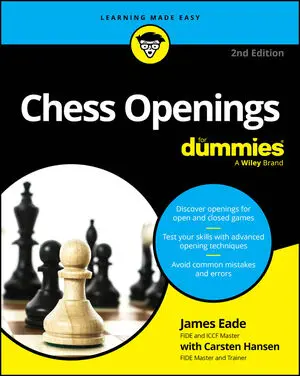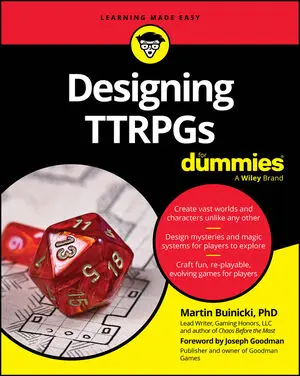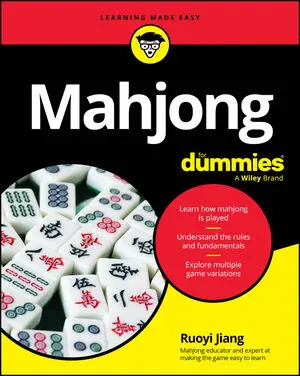Articles & Books From Games
Set yourself up for success by understanding the art of the chess opening Chess Openings For Dummies helps beginning and intermediate chess players improve their game by making the first few moves count. With a strong opening, you can dictate the flow of the game, control the center, and keep your king safe. This book shows you how to make tactical early moves that put you on a strong footing for the rest of the game.
Create your own epic tabletop adventures Tabletop role-playing games (also known as TTRPGs) are social games that often center on playing fictional characters in a story or adventure. Designing TTRPGs For Dummies is an introductory romp into the creative and magical world of the game design process. This fun book guides you through character creation sheets, rule setting, worldbuilding, and beyond.
Start enjoying mahjong games with family and friends, at local tournaments, and by hosting your own parties Mahjong For Dummies will teach you how to play traditional Chinese mahjong, American mahjong, and many other variations. This simple book breaks down the rules, explains the different mahjong styles, and offers easy-to-understand explanations and diagrams.
Cheat Sheet / Updated 11-03-2025
Mahjong is not one single game but a family of games with a shared ancestry. When someone says, “I know how to play mahjong,” you always have to ask: which kind?With that in mind, this For Dummies cheat sheet is a bit different from other cheat sheets in our series. Rather than offering just a single cheat sheet, I provide you with 6 — count 'em six!
Cheat Sheet / Updated 11-03-2025
You have lots of information to keep track of when designing a tabletop role playing game (TTRPG). One helpful way to do this is to prepare lists of the important people, places, actions, and equipment you need to include in your game. To help you get started, I’ve prepared two examples: a list of basic TTRPG actions that the player characters (PCs) in your game might take and a list of key village locations — essential buildings and businesses normally found in settlements.
Cheat Sheet / Updated 10-26-2025
Texas hold’em poker is everywhere these days — on TV, online, and in clubs and casinos. Before you sit down to a game of Texas hold 'em, make sure you’re in good shape to be successful — take care of non-poker issues and check your physical, mental, and financial status.During the game, you need to understand basic odds and playable hands, as well as how to bluff successfully and follow proper poker etiquette.
Article / Updated 10-23-2025
Rummy is a card game in which you try to improve the hand that you’re originally dealt. You can do this whenever it’s your turn to play, either by drawing cards from a pile (or stock) or by picking up the card thrown away by your opponent and then discarding a card from your hand.You can play rummy with two or more players (for six or more players, you need a second deck of cards).
Article / Updated 10-03-2025
Euchre is an excellent social card game, simple in concept but with a high degree of subtlety in the play. To play Euchre, you need the following:Four players: Two teams, two players to a team.A standard deck of 52 cards: Take out the ace through the 9 in each suit, making a deck of 24 cards for the game.Each player receives five cards, and you play one card at a time; the player who lays the highest card in the suit of the first card played — unless someone contributes a trump, in which case it is whoever lays the highest trump card — collects all four cards together and stacks the cards in front of them, thus taking the trick.
Learn what it takes to design a video game, as a hobby or as a career! Video Game Design For Dummies teaches you what it takes to design games from concept to completion. You'll learn the theory behind great gaming experiences, and you'll discover tools you can use to bring your game ideas to life. An experienced video game developer teaches you the basics of game design and how to motivate and engage players.
Cheat Sheet / Updated 04-21-2025
Creating a video game can feel as challenging as mastering a final boss fight. Whether you’re just curious about how video games are built or dreaming of designing your own, the process is full of moving parts, creative choices, and technical steps. This cheat sheet outlines the game design skills, tips, and resources you'll need to bring your video game vision to life.






